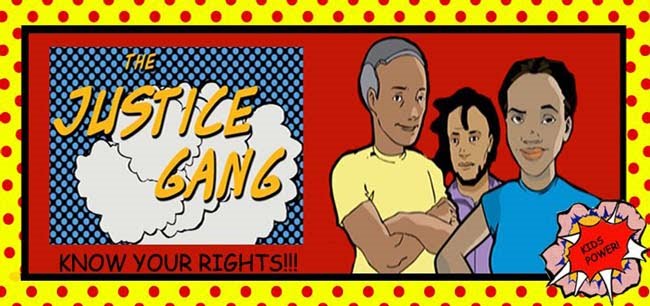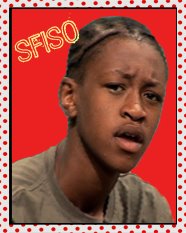It's me Gugu here, and today we're going to be finding out about your Right to a Sustainable Future. This right was mentioned in the Millennium Development Goals. One of these goals is to protect the Environment for future generations. Protecting the environment for future generations means exactly that. All living things are connected and if anything in the environment is removed too fast or removed completely, it destroys the balance. When an environment is out of balance, many living things may have trouble surviving.
Let's look at an example:
Rhino’s are on the Endangered wildlife list, which means that there are not as many rhino’s in the world as there should be. When rhinos start to disappear from their habitat it changes the landscape and makes it difficult for other species to survive. For example, black rhinos in Africa only browse on tips of shrubs and small trees and this helps to prune the plant which is very helpful to other species. Fewer rhino’s mean that bushes and trees take over the land and species like antelope will have to leave the area to search for more suitable food. There’s another reason we need to protect rhino’s -rhino’s also eat a LOT and this means they POOP a lot.
 Rhino poop is dry, and if you pick it apart you can often see some of the things the rhino has been eating; like seeds that will eventually germinate and grow into plants. By pruning bushes and small trees and spreading seeds through their poop, rhinos play a very important role in maintaining the health of the habitat they live in. This shows how everything is connected.
Rhino poop is dry, and if you pick it apart you can often see some of the things the rhino has been eating; like seeds that will eventually germinate and grow into plants. By pruning bushes and small trees and spreading seeds through their poop, rhinos play a very important role in maintaining the health of the habitat they live in. This shows how everything is connected. What you can do to help:
What you can do to help:Doesn’t it seem sometimes that the world is in a big mess? Does all the work that needs to be done to solve the world’s problems sometimes weigh you down? Worrying about the big issues is all very well, but only Taking Action will make you feel better. If you would like to become a Doer instead of a Worrier, here’s how to take your first steps:
Identify the issue that matters to you most. Action needs a sharp focus to be effective. It’s hard to take action on big issues so try to focus on a smaller issue that helps the big goal. For example “Saving the Planet” is a Very Big Issue. But you can help out in your own neighbourhood by planting trees.
Do your research: once you have decided which issue you care about most, you will want to find out all there is to know. The more you know about your issue, the more effective your action will be.
Choose your approach: Much can be done as an individual but there is strength in numbers. Join an existing school, community or other local group working in your chosen field. If there is not an existing group, you could form your own group or club but remember this requires a lot of work and a long-term commitment.
Get Organised: Talk to people you know to see who will support you. Find out where you can get the money and other resources you will need. You could ask for permission to talk about the issue at school, or at your place of worship, or at a community gathering.
Set up a meeting: This is a good way to gather support. Ask for permission to put up posters announcing the meeting at school. The day before your meeting, remind as many people as you can about it.
Build Your Team: It’s nice to do things with your friends but you may need to get others involved.
To be effective you will want to have people with different skills in your group. You need people who are:
creative to think of good ideas for campaigning, fundraising and other forms of action;
artistic to help create posters and displays;
organized to help plan events and make your group function smoothly and efficiently;
good at writing to compose letters, speeches, press releases and so on;
logical to help solve problems; and make sure your goals are realistic
good at maths to take care of finances;
passionate and enthusiastic to keep people motivated and aiming high;
good communicators to negotiate, help overcome personality clashes, and run meetings;
Lastly you will need to elect, or agree on who should be responsible for specific roles and jobs in the group and establish rules that you all agree on.
Remember it is easier to work on issues that affect your own neighbourhood.
Think Global. Act Local!
You can also help by planting trees, and this is how to plant a tree:
 Dig a square hole, half a metre wide by half a metre wide. Keep the dark topsoil separate from the lighter soil beneath it. Put the topsoil in the bottom of the hole.
Dig a square hole, half a metre wide by half a metre wide. Keep the dark topsoil separate from the lighter soil beneath it. Put the topsoil in the bottom of the hole.Remove the plastic bag from the sapling and place the tree upright in the hole, so that the base of the tree is just below the ground level.
Next to the tree’s roots, plant a 2 litre plastic cool drink bottle, cut holes in the bottom of the bottle. The top of the cool drink bottle must stick out of the ground.
Mix a small amount of compost or kraal manure with the left over lighter soil, and pack it firmly in the hole.
Measure one spade length in distance around the tree. In this area, remove all grass and weeds. Water the tree and add 10 cm layer of mulch (leaves, straw, or strips of newspaper). The mulch must not touch the tree.
Place a wooden stake next to the tree, and tie it loosely to the trees trunk with soft material, such as a stocking to help the tree grow straight.
Fill the cool drink bottle with water once a week. Once you have watered the tree, put the lid on the bottle, to prevent evaporation.
 Well that's all for now, remember to think local, act global and do your bit for the planet!
Well that's all for now, remember to think local, act global and do your bit for the planet! And don't forget, we'd love to hear from you, so drop us an email or leave us your comments!
And don't forget, we'd love to hear from you, so drop us an email or leave us your comments!Cheers
Gugu













No comments:
Post a Comment